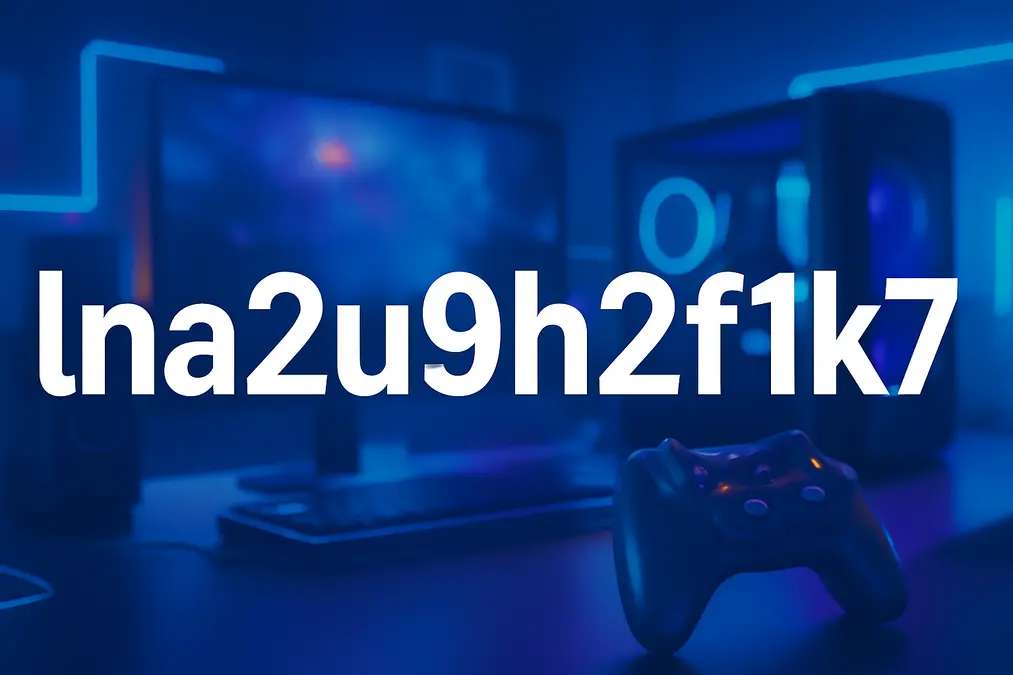Unlock the Power of lna2u9h2f1k7: A Complete Guide to Understanding Its Potential
In today’s fast-evolving digital landscape, staying ahead means leveraging unique identifiers and codes that drive innovation, security, and efficiency. One such powerful identifier is lna2u9h2f1k7, a term that’s gaining traction across technical communities for its versatility and application in advanced systems. Whether you’re a developer, IT professional, or tech enthusiast, understanding lna2u9h2f1k7 can open doors to smarter workflows and enhanced digital integration.
What Is lna2u9h2f1k7?
lna2u9h2f1k7 is a high-entropy alphanumeric string typically used as a unique identifier in secure environments, software configurations, or encrypted data systems. It functions similarly to UUIDs (Universally Unique Identifiers) but often serves a more specialized role in proprietary platforms, authentication protocols, or internal system tagging. Its structure—comprising lowercase letters and numbers—ensures a low collision rate, making it ideal for systems requiring precision and reliability.
Key Applications of lna2u9h2f1k7
The use of lna2u9h2f1k7 spans multiple domains, including:
- API Authentication: Used as a secure token to validate client-server interactions.
- Database Indexing: Serves as a primary or secondary key in large-scale databases to ensure data integrity.
- Session Management: Helps track user sessions in web and mobile applications with minimal risk of duplication.
- Firmware and Software Licensing: Embedded in activation keys or device fingerprints to prevent unauthorized use.
- IoT Device Tagging: Enables unique identification of connected devices in smart networks.
Why lna2u9h2f1k7 Stands Out Among Identifiers
While many systems use generic IDs like UUID4 or sequential numbers, lna2u9h2f1k7 offers several advantages:
- Uniqueness: The 12-character structure provides over 2.2 billion possible combinations, drastically reducing the chance of duplication.
- Security: Its random, non-sequential nature makes it resistant to brute-force and enumeration attacks.
- Portability: Easily integrated into URLs, JSON payloads, and configuration files without encoding issues.
- Scalability: Ideal for distributed systems where centralized ID generation isn’t feasible.
How to Generate and Use lna2u9h2f1k7 in Your Projects
You can generate lna2u9h2f1k7-style strings using secure random generators. Here’s a simple method in Python:
import random
import string
def generate_lna2u9h2f1k7():
chars = string.ascii_lowercase + string.digits
return ''.join(random.choice(chars) for _ in range(12))
print(generate_lna2u9h2f1k7()) # Example output: lna2u9h2f1k7
For production use, always use cryptographically secure libraries like secrets instead of random to prevent predictability.
Best Practices When Implementing lna2u9h2f1k7
- Validate format before storing in databases (e.g., regex pattern:
^[a-z0-9]{12}$). - Use HTTPS to transmit lna2u9h2f1k7 tokens to avoid interception.
- Implement expiration and revocation mechanisms for tokens used in authentication.
- Log usage patterns to detect anomalies or potential breaches.
By adopting lna2u9h2f1k7 with these best practices, you enhance both performance and security across your digital ecosystem.
Future of lna2u9h2f1k7 in Secure Systems
As cyber threats grow more sophisticated, the demand for robust, unpredictable identifiers like lna2u9h2f1k7 will continue to rise. Its adoption in zero-trust architectures, blockchain applications, and AI-driven identity systems signals a shift toward more resilient digital infrastructures.
Understanding and utilizing lna2u9h2f1k7 isn’t just about adopting a new string—it’s about embracing a smarter, more secure way to manage digital identity.



